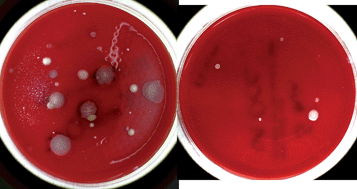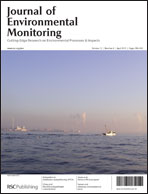MALDI-TOF mass spectrometry speciation of staphylococci and their discrimination from micrococci isolated from indoor air of schoolrooms
Abstract
The focus of our work is the identification of medically relevant staphylococci from the environment; these organisms are among the major opportunistic pathogens associated with human disease. Andersen sampling was performed in schoolrooms during the school year. Eleven of thirty six isolates (all Gram-positive tetrads) were identified as staphylococci and 23 were characterized as micrococci.


 Please wait while we load your content...
Please wait while we load your content...